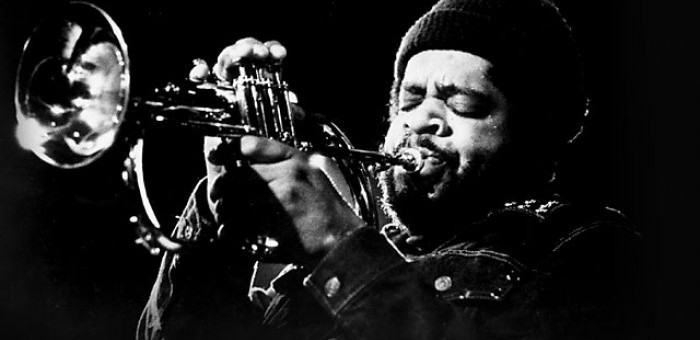Dec 9, 2025 12:28 PM
In Memoriam: Gordon Goodwin, 1954–2025
Gordon Goodwin, an award-winning saxophonist, pianist, bandleader, composer and arranger, died Dec. 8 in Los Angeles.…

Donald Byrd
(Photo: )Seminal trumpeter Donald Byrd, who was known for his collaborations with top artists, innovative style and lifelong commitment to jazz education, died on Feb. 4 in Delaware from unknown causes. He was 80.
From his legacy as a proponent of hard-bop to his segue into jazz fusion and hip-hop, Byrd was highly regarded for his ability to transcend genres, which earned him the respect of artists from all musical circles.
Born Donaldson Toussaint L’Ouverture Byrd II in 1932, Byrd was the son of a Methodist minister and musician. The product of Detroit’s celebrated music-education system, he was already an accomplished trumpeter by the time he graduated from Cass Technical High School. He earned his bachelor’s degree from Wayne State University in Detroit and his master’s from the prestigious Manhattan School of Music, and also went on to study music with famed educator Nadia Boulanger in Paris in 1963.
Byrd played with the U.S. Air Force Band from 1951–1952 and relocated to New York in 1955, where he performed with the George Wallington Group at Café Bohemia. His career took off when he joined Art Blakey’s Jazz Messengers in 1955 as the replacement for trumpeter Clifford Brown, whom he greatly admired. He went on to collaborate with Max Roach, John Coltrane, Sonny Rollins and Red Garland before forming a band with baritone saxophonist Pepper Adams and leading sessions under the Savoy label.
In 1958, Byrd signed an exclusive recording contract with the Blue Note label and released his debut album with Adams, Off To The Races, in 1959. He formed his own touring quintet in the early 1960s began to evolve his hard-bop style, utilizing influences from r&b and gospel music. His 1969 Blue Note release Fancy Free exemplified this transition into more commercial jazz-fusion and funk styles. Though Byrd’s eventual deviation from the mainstream was panned by some critics, his 1973 album Black Byrd, which he recorded under brother producers Larry and Alphonso “Fonce” Mizell, became one of the best-selling Blue Note albums of all time.
Around the same time, Byrd became a pioneer in jazz education, instructing at New York’s Music & Art High School and holding clinics and private lessons at National Stage Band Camps. The trumpeter held teaching appointments at universities around the country, including Rutgers University, where he was the first person to teach jazz. He also taught at Hampton University, North Carolina Central University, North Texas State University, Delaware State University, William Paterson University and Howard University, where he founded the jazz department and was named chairman of the black music department. While at Howard, he formed a band with students called The Blackbyrds, which enjoyed chart-topping success with songs such as “Street Lady” and “Places And Spaces” in the mid-1970s. In 1982, Byrd received his honorary doctorate from New York Teachers’ College at Columbia University.
Byrd’s influence extended into the realm of contemporary hip-hop, and many of his Blue Note recordings became fodder for sampling on more than 100 tracks from artists such as A Tribe Called Quest, Public Enemy and Nas. He also performed on late hip-hop artist Guru’s 1993 album Jazzmatazz Vol. 1, a fusion of jazz and hip-hop performed by a vast personnel of respected artists from both genres.
In 2000, the National Endowment for the Arts recognized Byrd as an NEA Jazz Master.
Byrd’s death was kept confidential and was thought to be an Internet hoax until his nephew, jazz keyboardist Alex Bugnon, released a series of Facebook posts and emails announcing his passing.
“I have no more patience for this unnecessary shroud of secrecy placed over [Byrd’s] death by certain members of his immediate family,” Bugnon wrote on his Facebook page last Wednesday afternoon.
To read a classic interview of Donald Byrd from the DownBeat archives (“Donald Byrd Today,” Jan. 27, 1966), click here.
—Hilary Brown

Goodwin was one of the most acclaimed, successful and influential jazz musicians of his generation.
Dec 9, 2025 12:28 PM
Gordon Goodwin, an award-winning saxophonist, pianist, bandleader, composer and arranger, died Dec. 8 in Los Angeles.…

Nov 13, 2025 10:00 AM
For results of DownBeat’s 90th Annual Readers Poll, complete with feature articles from our December 2025 issue,…

Flea has returned to his first instrument — the trumpet — and assembled a dream band of jazz musicians to record a new album.
Dec 2, 2025 2:01 AM
After a nearly five-decade career as one of his generation’s defining rock bassists, Flea has returned to his first…

“It’s a pleasure and an honor to interpret the music of Oscar Peterson in his native city,” said Jim Doxas in regard to celebrating the Canadian legend. “He traveled the world, but never forgot Montreal.”
Nov 18, 2025 12:16 PM
In the pantheon of jazz luminaries, few shine as brightly, or swing as hard, as Oscar Peterson. A century ago, a…

Dec 11, 2025 11:00 AM
DownBeat presents a complete list of the 4-, 4½- and 5-star albums from 2025 in one convenient package. It’s a great…